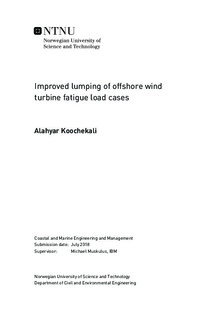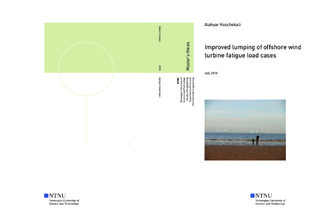| dc.description.abstract | Stochastic environmental modelling, and structure response calculation are two major steps in determining fatigue damage for offshore wind turbines. However, there are challenges ahead of each step. First, site-specific or high-quality met-ocean data that contain joint measurements of wind and wave are not always available. To generate joint met-ocean data, copula was used. Copula is a function that can capture autocorrelation and dependence of two random variables. The copula was calculated for a specific location in the North Sea for pairs of random met-ocean variables (wave height, wind speed) and (wave height, wave period). This joint function was transferred to another location where only marginals were known. New data were generated by combining these data sets.
Second, even though integrated time-domain analysis of offshore wind turbines can capture the dynamic response of a structure, such simulations are time-consuming. Lumping is a way to reduce a full sea-state to some load cases by weighting environmental parameters by a certain criterion. A simple lumping method was applied to generate lumped sea-state representing pairs of random variables. This lumping method is applied on both real data and copula-generated data. In addition, the difference between fatigue damage caused by real data and copula generated-data were calculated using a formula based on the quasi-static response of a wind turbine. The results show using copula together with simple lumping method can provide a very good estimation of lumped wind and wave height, and fatigue damage. The average difference measured was less than 15%. The copula accuracy reduces in predicting lumped wave height and period, and fatigue damage due to less correlation of wave height and wave period. | |

